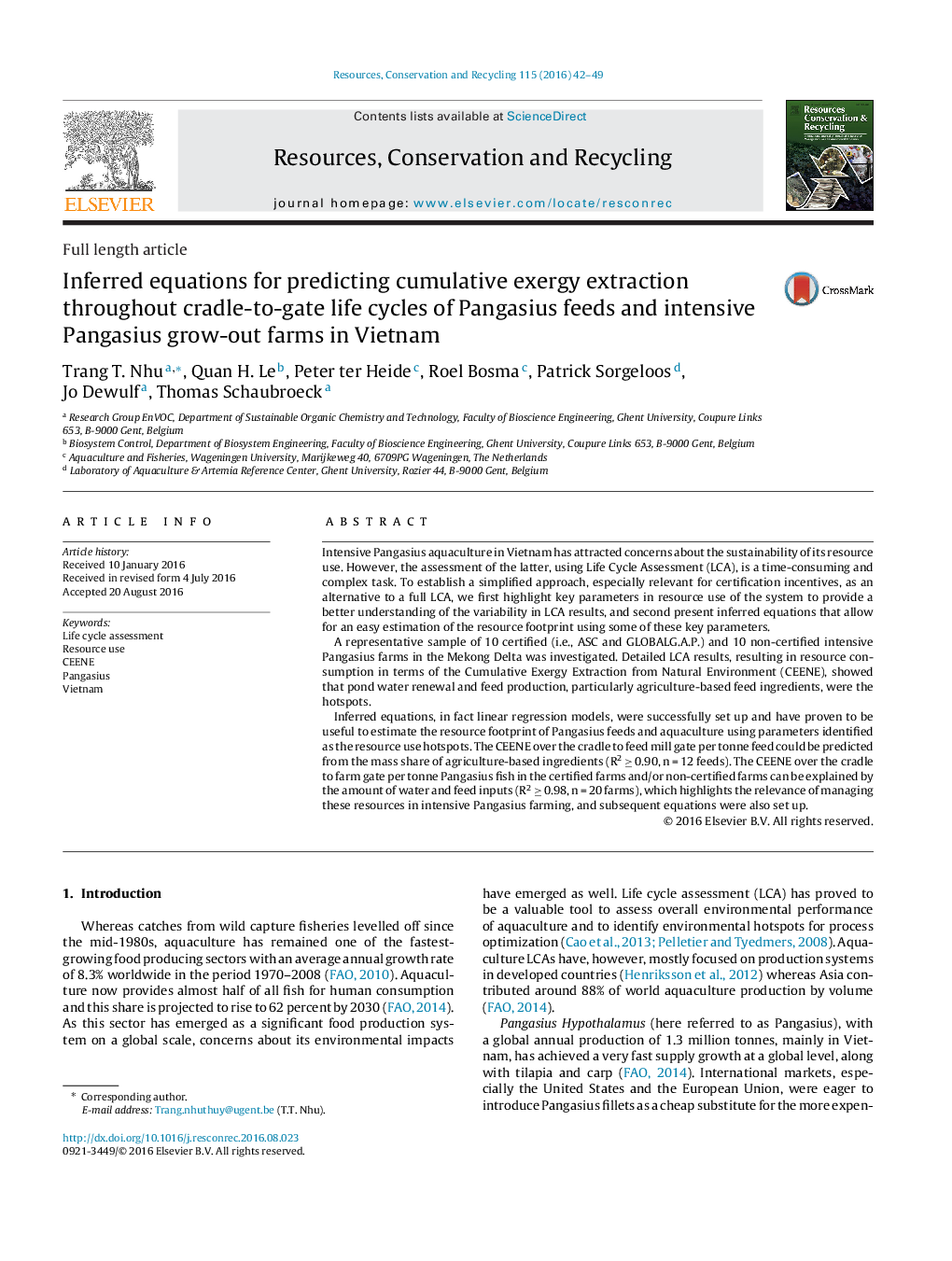| Article ID | Journal | Published Year | Pages | File Type |
|---|---|---|---|---|
| 1062654 | Resources, Conservation and Recycling | 2016 | 8 Pages |
•Life cycle assessment from cradle to gate of Pangasius feeds and aquaculture.•Resource use quantified as Cumulative Exergy Extracted from Natural Environment (CEENE).•Linear regression models set up by identified key parameters in resource use.•CEENE of feed predicted by mass percentage of agriculture-based ingredients.•CEENE of Pangasius predicted by the amount of water and feed input.
Intensive Pangasius aquaculture in Vietnam has attracted concerns about the sustainability of its resource use. However, the assessment of the latter, using Life Cycle Assessment (LCA), is a time-consuming and complex task. To establish a simplified approach, especially relevant for certification incentives, as an alternative to a full LCA, we first highlight key parameters in resource use of the system to provide a better understanding of the variability in LCA results, and second present inferred equations that allow for an easy estimation of the resource footprint using some of these key parameters.A representative sample of 10 certified (i.e., ASC and GLOBALG.A.P.) and 10 non-certified intensive Pangasius farms in the Mekong Delta was investigated. Detailed LCA results, resulting in resource consumption in terms of the Cumulative Exergy Extraction from Natural Environment (CEENE), showed that pond water renewal and feed production, particularly agriculture-based feed ingredients, were the hotspots.Inferred equations, in fact linear regression models, were successfully set up and have proven to be useful to estimate the resource footprint of Pangasius feeds and aquaculture using parameters identified as the resource use hotspots. The CEENE over the cradle to feed mill gate per tonne feed could be predicted from the mass share of agriculture-based ingredients (R2 ≥ 0.90, n = 12 feeds). The CEENE over the cradle to farm gate per tonne Pangasius fish in the certified farms and/or non-certified farms can be explained by the amount of water and feed inputs (R2 ≥ 0.98, n = 20 farms), which highlights the relevance of managing these resources in intensive Pangasius farming, and subsequent equations were also set up.
